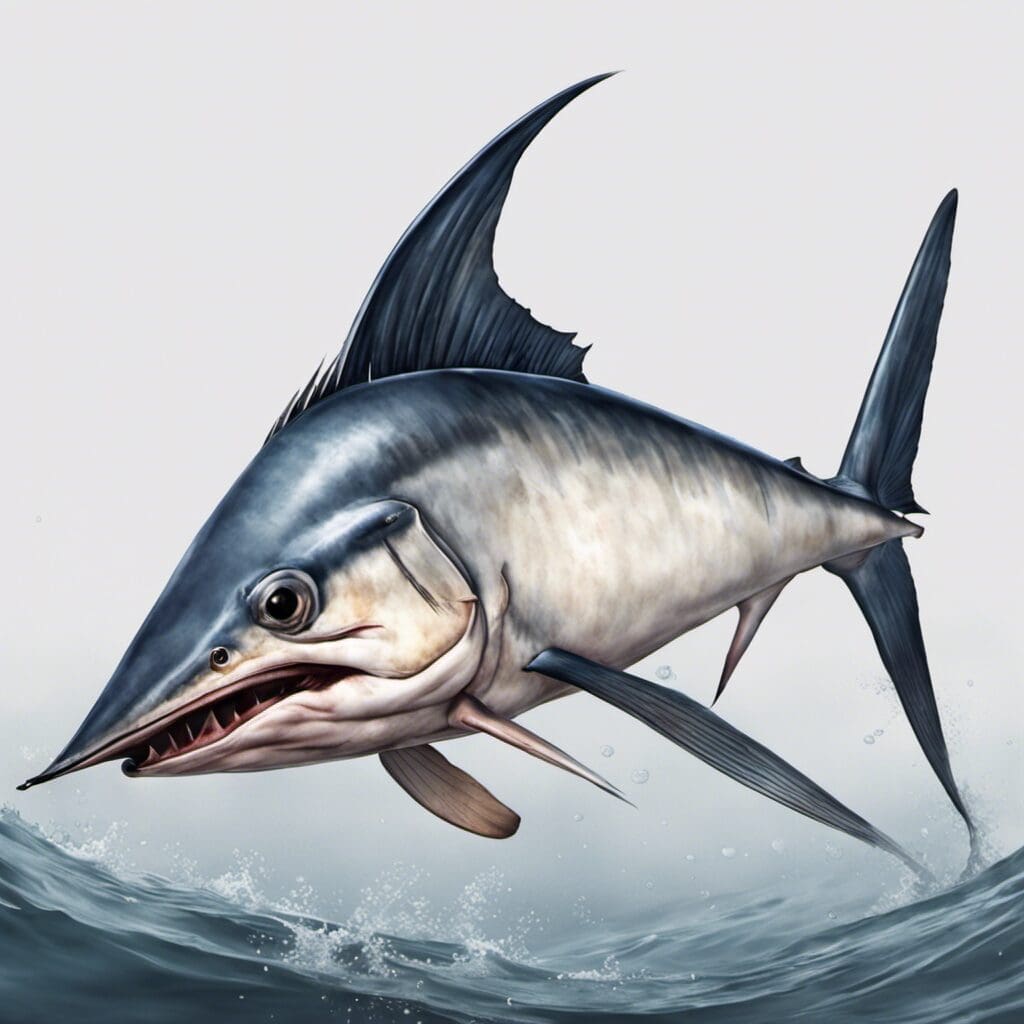Introduction
The Swordfish, known scientifically as Xiphias gladius, is a predatory fish belonging to the family Xiphiidae. Recognized for its long, pointed bill resembling a sword, this large species is found in many of the world’s oceans.
Conservation Status
As per the International Union for Conservation of Nature (IUCN), the Swordfish is listed as Least Concern. Efforts in their conservation include fishing regulations and quotas to ensure sustainable populations. The species has also shown resiliency in recovering from previous overfishing incidents.
Statistics
| Statistic | Average | Range |
|---|---|---|
| Length | 3 m (10 ft) | 2-4.5 m (6.5-14 ft) |
| Weight | 320 kg (705 lbs) | 50-650 kg (110-1433 lbs) |
| Average Lifespan | 15 years |
Distribution
Swordfish are found in the Atlantic, Pacific, and Indian Oceans. They’re known for their extensive migrations moving closer to the poles in the summer for cooler waters and towards the equator in the winter.
Habitats
Swordfish predominantly dwell in the mesopelagic zone (200-1000 m below surface). They prefer warm, tropical to temperate waters with temperatures of 18 to 22 degrees Celsius.
When and Where to See
Swordfish can be seen migrating towards cooler waters during the warmer months. They are more active during the night making it the best time to witness them.
Best Fishing locations
- The Florida Keys, US
- Cabo San Lucas, Mexico
- Quepos, Costa Rica
- Osaka Bay, Japan
- Accra, Ghana
- Madeira, Portugal
- Southern California, US
- Mauritius
- New South Wales, Australia
- Nova Scotia, Canada
How to Catch
Bait such as squid or mackerel can be effective in catching swordfish. Trolling or deep-dropping techniques are often used. Nighttime fishing tends to be more successful.
Identification Guide
Swordfish have a distinctive shape, with a long, flat bill and a high, crescent-shaped dorsal fin. They are generally dark blue to gray in colour, with lighter tones on the underside.
Culinary
Swordfish flesh is firm and meaty with a mildly sweet flavor. It’s rich in protein, vitamins, and minerals. Common recipes include grilling, broiling, or frying.
Additional Information
Swordfish are opportunistic feeders, consuming a diet primarily of fish and squids. Known threats include overfishing and entanglement in fishing gear. The Swordfish plays a role in various cultural narratives and is often depicted in art and literature.
References and Further Reading
For more in-depth information about Swordfish, refer to research by National Oceanic and Atmospheric Administration (NOAA), Food and Agriculture Organization of the United Nations (FAO), and various scientific journals.

